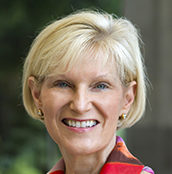
No one could have predicted the challenges COVID-19 has brought to caregivers and the millions of older adults they serve. But the pandemic has exposed major and systemic issues in the older adult care system that are not unique to the crisis. It is abundantly clear our current approach is no longer working.
The older adult care system is a patchwork of outdated state policies stitched together by historically low levels of federal funding. This has resulted in a colossal caregiver shortage that has not only failed to provide vital reinforcements to combat the pandemic, but also is unable to keep up with the growing number of older Americans.
As we work to address the immediate needs of this crisis — such as access to testing, personal protective equipment and workforce shortages — we also have the opportunity to re-imagine our nation’s older adult care system.
We must work to create a system that is both resilient to future pandemics and prepared to address the critical healthcare needs of America’s fast-growing aging population using technology innovations, workforce training and payment enhancements.
Today, 1.2 million Americans live in the nation’s more than 15,000 nursing homes, and as baby boomers age, 70% will need some form of caregiving during their lifetime. Older adults currently make up 15% of the national population. By the end of the decade, that figure will increase to 21%.
The number of employed caregivers is just not sufficient to meet this rising demand. In fact, the nation will need an additional 2.5 million caregivers by 2030 just to keep up, stabilize provider costs and maintain quality of care.
Frontline caregivers, particularly nursing assistants, take on a role that is emotionally and physically challenging and requires outsized compassion and grit. Yet, chronically low federal funding and Medicaid reimbursement rates have led to stagnant wages and created obstacles, such as facility design, that hinder improvements to quality of care for older adult residents.
If we do not begin to remove these barriers, the inequities in care delivery for older adults will continue to accelerate long after the pandemic ends.
In the face of this despair, I am optimistic for the future. We have solutions and a roadmap for bringing long-term improvements to the caregiver workforce. In September, the national Coronavirus Commission on Safety and Quality in Nursing Homes, comprised of a diverse group of leaders and stakeholders in aging services, released recommendations to help stem the pandemic in skilled nursing. They include guidance for modernizing the recruitment and training of caregivers, as well as considerations for facility design.
Central to this effort is the creation of a national Long-Term Care Workforce Commission. This commission will pursue meaningful reforms, while overseeing important competitive grant programs, scholarships and federally backed hazard pay during the crisis.
The pandemic is far from over and there is much work to be done. But with a roadmap to guide us, a commission to lead us and the backing (and funding) of the federal government, we have the opportunity to ensure older adults can age with dignity for years to come.
Jeannee Parker Martin is president and chief executive officer of LeadingAge California, whose members represent nonprofit providers of senior living and care.



